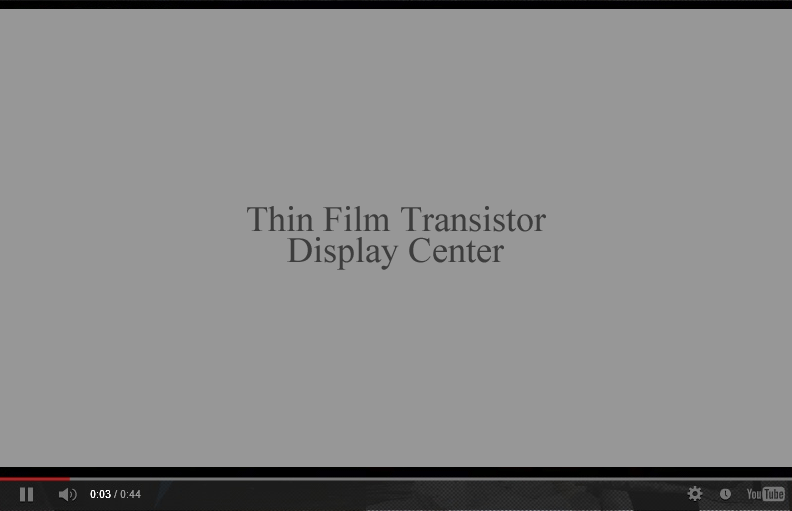Organic photovoltaics (OPV) is an emerging PV technology that shows potential for low-cost, light-weight, and flexible solar electricity generation. This highly interdisciplinary field has been of great academic and industrial interest. In the past few years, significant progress has been made with energy conversion efficiencies now in the 12% range in both polymeric and small molecule-based OPV devices. Despite this progress, there is still a need to increase our understanding of the underlying processes in OPV devices at the nanoscale and bulk as well as the chemistry, physics, and engineering issues behind OPV systems. Furthermore, the commercial viability of the technology such as large-area fabrication via roll-to-roll coating/printing or vacuum processes needs to be enabled to fully realize the advantages of OPV as a technology.
In ADRC, the research fields are mainly related with:
i) Polymeric, small molecule, and organic/inorganic hybrid PV devices
ii) Novel interfacial/buffer layer materials
iii) Active-layer materials development
iv) Electrode strategies and materials development
v) Novel device concepts and architectures
vi) Lifetime issues and degradation mechanisms
vii) Encapsulation materials and processes
References:
1) “Organic Photovoltaic with PEDOT:PSS and V2O5 Mixture as Hole Transport Layer”.
Seung Joo Lee, Hyeong Pil Kim, Abd. Rashid bin Mohd Yusoff, Jin Jang.
Revised.
2) “Transparent Flexible Organic Solar Cells with 6.87 % Efficiency Manufactured by All Solution Process”.
Wilson Jose da Silva, Hyeong Pil Kim, Abd. Rashid bin Mohd Yusoff, and Jin Jang.
Nanoscale. Accepted manuscript.
3) “Extremely Stable All Solution Processed Organic Tandem Solar Cells with TiO2/GO Recombination Layer under Continuous Light Illumination”.
Abd Rashid bin Mohd Yusoff, Wilson Jose da Silva, Hyeong Pil Kim, Jin Jang.
Revised.
4) “All Solution Processed Tandem Solar Cells”.
Abd. Rashid bin Mohd Yusoff, Hyeong Pil Kim, and Jin Jang.
Energy Technology vol. 1, no. 4, pp. 212 – 216, (2013).
5) “Solution Processed Encapsulation for Organic Photovoltaics”.
Hee-Jae Lee, Hyeong Pil Kim, Hyo Min Kim, Jun Ho Youn, Dong Hee Nam, Young-Gu Lee, Jueng Gil Lee, Abd. Rashid bin Mohd Yusoff, and Jin Jang.
Solar Energy Materials & Solar Cells vol. 111, pp. 97 – 101, (2013).
6) “Organic photovoltaics with V2O5 Anode and ZnO Nanoparticles Cathode Buffer Layers”.
Abd. Rashid bin Mohd Yusoff, Hyeong Pil Kim, and Jin Jang.
Organic Electronics vol. 14, no. 3, pp. 858 – 861, (2013).
7) “Organic Solar Cells using Reduced Carbon Anode Buffer Layer”.
Abd. Rashid bin Mohd Yusoff, Hyeong Pil Kim, and Jin Jang.
Solar Energy Materials & Solar Cells vol. 110, pp. 87 – 93, (2013).
8) “Semi-transparent Organic Inverted Photovoltaic Cells with Solution Processed Top Electrode”.
Hyeong Pil Kim, Hee Jae Lee, Abd. Rashid bin Mohd Yusoff, and Jin Jang.
Solar Energy Materials and Solar Cells vol. 108, pp. 38 – 43, (2013).
9) “Inverted Organic Solar Cells with TiOx Cathode and Graphene Oxide Anode Buffer Layers”.
Abd. Rashid bin Mohd Yusoff, Hyeong Pil Kim, and Jin Jang.
Solar Energy Materials and Solar Cells vol. 109, pp. 63 – 69, (2013).
10) “Organic Photovoltaic Solar Cells with Cathode Modified by ZnO”. Hyeong Pil Kim, Abd. Rashid bin Mohd Yusoff, and Jin Jang.
Journal of Nanoscience and Nanotechnology vol. 13, no. 7, pp. 5142 – 5147, (2013).
11) “Stable Photovoltaic Cells based on Graphene Oxide/Indium Zinc Oxide Bilayer Anode Buffer”. Hyeong Pil Kim, Abd. Rashid bin Mohd Yusoff, Mi Sun Ryu, and Jin Jang.
Organic Electronics vol. 13, no. 12, pp. 3195 – 3202, (2012).
12) “Comparison of Organic Photovoltaic with Graphene Oxide Cathode and Anode Buffer Layers”.
Abd. Rashid bin Mohd Yusoff, Hyeong Pil Kim, and Jin Jang.
Organic Electronics vol. 13, no. 11, pp. 2379 – 2385, (2012).
13) “Photo-mask Effect in Bulk Heterojunction Organic Solar Cells with ZnO Cathode Buffer Layer”.
Hyeong Pil Kim, Mi Sun Ryu, Jun Ho Youn, Abd. Rashid bin Mohd Yusoff, and Jin Jang.
IEEE Electron Device Letters vol. 33, no. 10, pp. 1480 – 1482, (2012).





















































